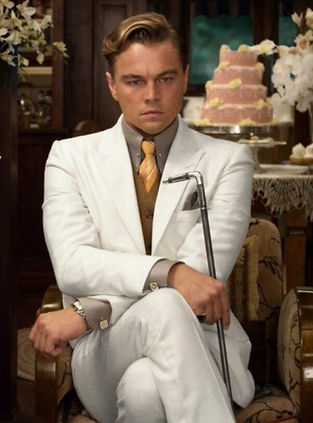Gatsby’s World
Style, Era, Characters & The Jazz Age Perspective
F. Scott Fitzgerald’s The Great Gatsby isn’t just a story — it’s a visual, cultural, and emotional experience that captures the glitz and tragedy of the Roaring Twenties.

.jpeg)
Era & Atmosphere
The 1920s in America were all about excess, ambition, and the pursuit of the American Dream. Lavish parties, roaring jazz, and glittering mansions mask the emptiness and longing of a society obsessed with wealth and appearance. The novel and film both explore this tension between surface glamour and emotional depth.
%20Leonardo%20DiCaprio.jpeg)
Style & Fashion
The Jazz Age defined glamour, and The Great Gatsby immortalizes it. Flapper dresses, sequins, pearls, and headbands for women; tailored suits, pocket watches, and fedoras for men. Costume designer Catherine Martin brought Fitzgerald’s era to life in Baz Luhrmann’s 2013 adaptation, merging vintage elegance with modern cinematic flair. Every outfit isn’t just clothing — it’s character, status, and story.
.jpeg)
Characters & Relationships
-
Jay Gatsby: The mysterious millionaire driven by love, obsession, and ambition.
-
Daisy Buchanan: The beautiful, privileged symbol of Gatsby’s dreams — charming yet shallow.
-
Nick Carraway: The reflective narrator, balancing admiration and critique of the decadent world around him.
-
Tom Buchanan & Jordan Baker: Representing old money, entitlement, and societal expectations.
Their intertwined stories explore desire, illusion, and the cost of chasing dreams — all against a backdrop of jazz, luxury, and moral ambiguity.
General Perspective
At its core, The Great Gatsby is a meditation on the American Dream, love, and societal pressures. Its fashion, energy, and decadence make it a timeless cultural touchstone. Beyond the story, it’s a visual and emotional template for style, ambition, and tragedy — reminding us that behind every glamorous party, there may lie a world of longing.
